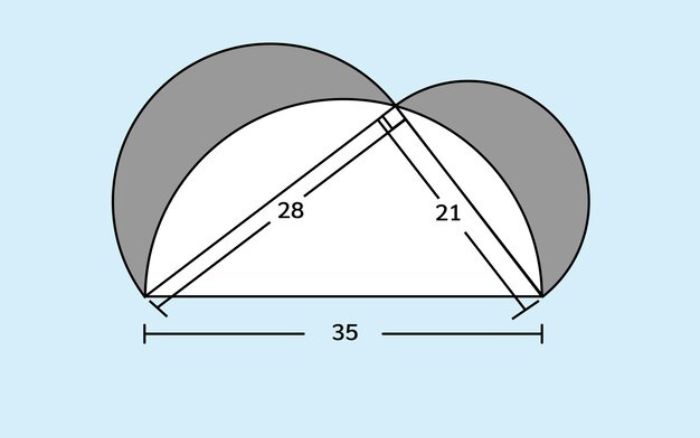Mathematics, the language of the universe, can sometimes seem like an impenetrable fortress of symbols and theorems. Fear not, fellow explorers of the mathematical realm! Let’s embark on a journey of examples of theorems, sprinkled with a pinch of humor to lighten the mathematical load.
Examples of Theorems
The complete details of each example of the theorem are given below;
1. Pythagorean Theorem
Imagine a right-angled triangle as a pizza slice – a savory analogy for the Pythagorean Theorem. The square of the hypotenuse, akin to that extra-large pizza slice, equals the sum of the squares of the other two sides. Who knew math could awaken the appetite?
2. Fermat’s Last Theorem
Pierre de Fermat’s tantalizing margin note left mathematicians scratching their heads for centuries. It’s akin to leaving a friend on “read” with a cryptic message. Enter Andrew Wiles, the codebreaker, proving that no trio of positive integers satisfies the equation a^n + b^n = c^n for n > 2.

3. The Fundamental Theorem of Calculus
Think of this theorem as the VIP pass for derivatives and integrals. Finding the derivative and then integrating brings you back to the mathematical starting point – a detour that leads you right back to the same ice cream parlor. Sweet.
4. The Birthday Paradox
In a room of just 23 people, the Birthday Paradox emerges – a statistical head-scratcher where the chance of two people sharing the same birthday is better than even. It’s like the universe attempting to fit more candles on the same cake – a delightful twist in probability.
5. The Banach-Tarski Paradox
Picture a solid ball that can be split into non-overlapping pieces, then magically reassembled into two identical solid balls. It’s the Banach-Tarski Paradox – a mathematical rabbit pulled out of a hat, challenging our perception of reality.
6. Russell’s Paradox
Bertrand Russell stumbles into a paradoxical barber shop where the barber claims to shave those who don’t shave themselves and only those who do. Russell’s question, “Who shaves the barber?” spins heads in this hairy situation – a paradoxical conundrum.
7. The Butterfly Effect (Chaos Theory)
Chaos theory unveils the Butterfly Effect – where the flap of a butterfly’s wings in Brazil can trigger a tornado in Texas. It’s like blaming a butterfly for your messed-up hair – a whimsical connection between small actions and significant consequences.
8. The Uncertainty Principle
Werner Heisenberg’s Uncertainty Principle states you can’t know both the position and momentum of a subatomic particle precisely. It’s akin to trying to juggle and play the harmonica simultaneously – a playful analogy of uncertainty.
Also Read: Examples of Tricolons
9. The Monty Hall Problem
Enter a game show dilemma with the Monty Hall Problem. Choose Door #1, and Monty reveals a goat behind Door #3. Surprisingly, your odds improve if you switch. It’s like playing mind games with doors – the ultimate game of chance.
10. Bayes’ Theorem
Bayes says, “Update your beliefs based on new evidence.” Picture it as constantly adjusting your pizza order based on your friends’ toppings preferences. Probability, like pizza, is an ever-evolving taste of logic.
11. Gödel’s Incompleteness Theorems
Kurt Gödel proves that within any logical system, there are true statements that can’t be proven within that system. It’s like trying to explain why pineapple on pizza is a culinary masterpiece – some things transcend logic.
12. The Golden Ratio
Nature’s aesthetic secret, the golden ratio, is like the perfect Instagram filter for design. Found in seashells, sunflowers, and the Parthenon, it’s the universe’s way of saying, “Let’s keep things visually pleasing.”

13. Euler’s Formula
e^(iπ) + 1 = 0 connects five crucial numbers in mathematics. It’s like a mathematical mic drop – simple, elegant, and profound.
14. The Isoperimetric Inequality
Enclose the maximum area with a fixed amount of fencing, and the circle emerges victorious – nature’s declaration that curves know how to maximize space.
15. The Four Color Theorem
Color a map with just four colors, ensuring no adjacent regions share the same hue. It’s like telling artists, “Express the world, but keep it color-coded” – a creative challenge in cartography.
16. The Pigeonhole Principle
With more pigeons than pigeonholes, chaos is inevitable. It’s like trying to fit too many shoes into your closet – a mathematical metaphor for limited spaces.
17. Cantor’s Diagonal Argument
Cantor proves that not all infinities are created equal. Picture infinity as a vast playground with different slides and swings – a concept challenging our understanding of the infinite.
18. The Halting Problem
Alan Turing explores the possibility of creating an algorithm that determines whether any given algorithm halts or continues forever. Spoiler alert: You can’t. It’s like asking Siri to predict your mood for the next decade – too many unpredictable variables.
19. The Law of Large Numbers
As trials in a random process increase, the average outcome approaches the expected value. It’s like saying, “Keep flipping that coin, and eventually, it’ll have to make up its mind” – a journey of decision-making in probability.
20. P vs NP Problem
The intellectual quest explores whether quickly verifying a solution implies finding the solution is also quick. It’s like saying, “I can tell if it’s a cake, but can I bake it as fast?” Mathematicians continue to ponder this intricate problem of algorithmic efficiency.

